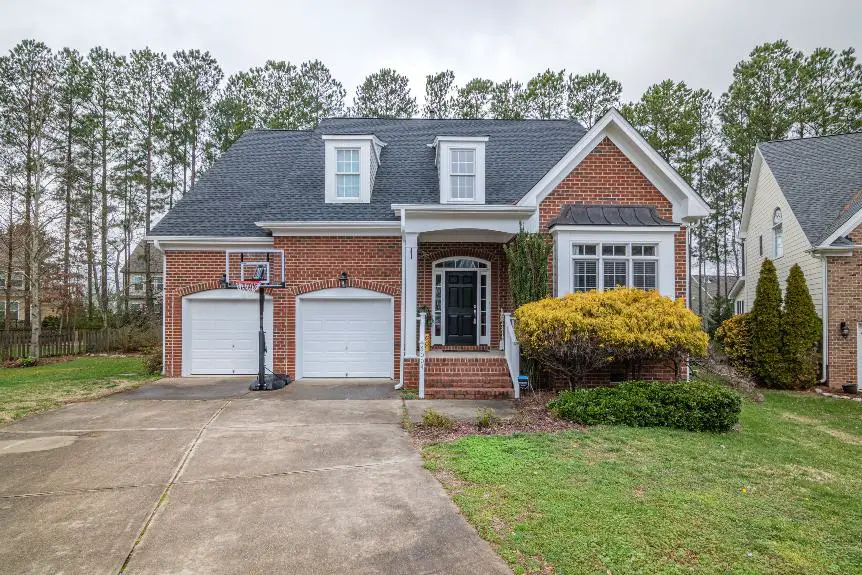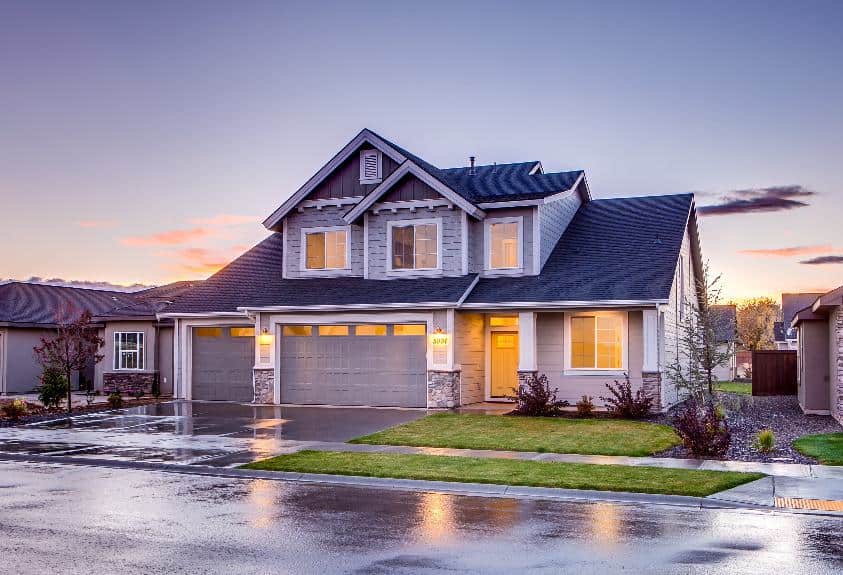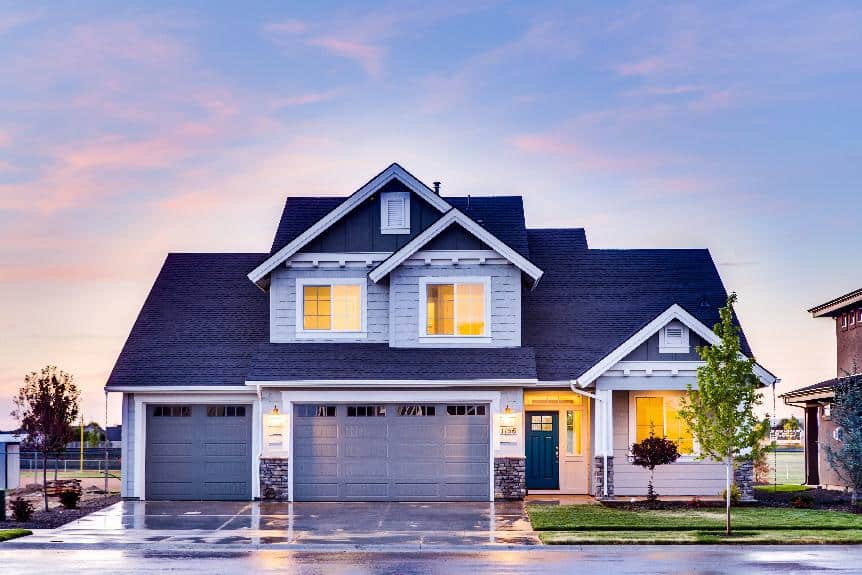When deciding if a garage door should match the front door, consider the home's overall look. Matching the style, color, and materials of both doors can make the house look better from the street. However, it's important to think about the house's design. A matching set can create a unified appearance, but it's not always necessary.
The choice depends on the house's design, color scheme, and how it looks from the street. In the end, it's up to the homeowner's preference and the house's design.
Assessing Your Home's Style
When assessing your home's style, consider the architectural design as it influences your choice of doors. Your home's architecture reflects different historical periods and design approaches, which guide the selection of elements like doors for both function and appearance. For a unified exterior, it's important to match doors with the home's overall architectural style.
A key principle is to avoid adding or altering elements, such as doors, that conflict with the home's design period. For example, a Victorian home with detailed trim work suits doors with similar intricate patterns, while a mid-century modern home pairs well with doors featuring clean lines and simple designs.
The home's exterior, including color scheme and materials, should inform your choice of door styles and finishes. A mismatched door can disrupt visual harmony and affect curb appeal. When selecting a garage door to match the front door, consider the existing colors and materials to maintain a consistent and attractive exterior.
Color Coordination Techniques
Homeowners should use color coordination to ensure their garage and front doors enhance their home's overall look. Choosing paint colors is crucial for a cohesive exterior. Often, a bold color for the front door can create a focal point, while a subdued shade for the garage door keeps the look balanced.
The building materials of the home should guide color choices for a unified appearance. For instance, warm tones may suit a brick exterior, and cool hues may fit a stone facade, aiming to complement rather than clash with these materials.
To achieve a uniform look, doors can match the house's body or trim color. This integration helps doors appear as a deliberate part of the home's design. The style of the home influences color selection as well; modern homes may suit a monochromatic palette, while traditional homes might look better with contrasting colors.
Adding matching hardware to both the front and garage doors can unify their appearance without identical colors. These color coordination methods offer design flexibility while respecting the home's architecture and aesthetic.
The Impact of Material Choices
Choosing compatible materials for both the garage and front doors is essential to achieve a unified look for the home's exterior. The selection of materials is critical for an attractive facade that aligns with the home's architecture and existing materials. When coordinating your front door with your garage door, consider the interaction between materials and the overall design.
For homes with natural wood siding, a wooden garage door can complement the organic appearance, while a steel door may offer a contrasting look that still matches the color scheme. Contemporary homes may benefit from matching steel or glass for both garage and front doors to uphold a modern aesthetic.
It is acceptable to introduce new materials as long as they do not conflict with the home's exterior. For example, painting the front door a different color can add visual interest to the garage area while maintaining overall harmony. This approach can highlight the entrance without introducing excessive material variety.
Avoid using materials that are not part of the home's existing design to prevent disrupting the exterior's visual flow. The chosen materials should match or complement the existing structure, adhering to the color scheme and architectural style.
Considering Architectural Consistency
When choosing whether a garage door should match the front door, it's important to maintain architectural consistency. This means designs elements on the house's exterior should work together harmoniously to improve the home's curb appeal. This integration includes matching materials, colors, and styles that suit the house's design.
For a Carriage House style home, a traditional wooden front door paired with a similar garage door can highlight the home's historical look. A modern home benefits from garage and front doors with a contemporary design.
Color is key for consistency. A bold color for the front door can draw attention, while a subtler color for the garage door avoids an overpowering look. The front door can then be the focus, with the garage door complementing it.
Using the same paint or stain finishes on both doors can unify the home's appearance. Colors in the same family for both doors can connect the design elements, leading to a cohesive exterior. Architectural consistency can increase curb appeal and possibly the home's value.
The Role of Windows and Glass
Windows and glass are key elements in the design of a home. Matching window designs on both the garage and front doors is important for visual unity. When these elements are coordinated, they enhance the home's curb appeal.
To achieve a cohesive look, align the shape, trim, and style of the windows on both doors. For example, if the front door has arched windows with black trim, using the same design on the garage door will make the house frontage look consistent. This ensures that the doors complement each other and the home's architecture.
Black window trim is currently a popular design choice for a modern appearance. Applying this trend to both the garage and front doors creates a uniform theme. This can be paired with other exterior metal elements, like light fixtures or railings, for a cohesive exterior.
It is important to maintain consistent window designs across the front door and garage door to keep the exterior balanced and harmonious.
Selecting Complementary Hardware
Homeowners can achieve a cohesive look between their garage and front doors by selecting complementary hardware. This includes choosing handles, locks, hinges, and knockers that serve both practical and aesthetic purposes.
Matching the style and finish of the hardware is important for visual balance. For example, a modern front door with simple stainless steel handles should have similar garage door hardware. A traditional home might look better with antique-style wrought iron or brass hardware.
The hardware's finish should be consistent, such as matte black or polished chrome, to unify the appearance even if the designs differ. This ensures the hardware matches and enhances the doors and the home's exterior. Choosing hardware that suits the home's architectural style is important for an authentic look.
In selecting hardware for garage and front doors, it is recommended that homeowners maintain consistency in material, style, and finish to reflect the home's character and achieve a unified visual appeal.
Balancing Aesthetics and Functionality
Balancing aesthetics and functionality requires choosing a garage door that matches the front door in style and also meets practical needs like durability and security. Homeowners should aim for a cohesive design that complements the home's architectural style. The front door is a key feature and its design can be reflected in the garage door for consistency.
The color of the garage door should fit with the home's exterior colors and the front door, but not dominate. A front door may have a unique color to attract attention, while a garage door might use a quieter shade to keep a balanced look. Using the same materials and colors for both doors helps unify the home's exterior.
Functionality is crucial for a garage door. It needs to be secure and able to endure everyday use. Durable materials that suit the local weather conditions are important, as sun exposure can affect the door's color and longevity.
When deciding if the garage door should match the front door, homeowners must consider their personal taste and the effect on the home's look. A garage door that aligns with the front door in terms of style, windows, and hardware adds to the home's aesthetic and fulfills its functional role. Focusing on both aesthetics and practicality ensures the doors are visually appealing and meet performance and security needs.
Maintenance and Longevity Concerns
Choosing the same materials for garage and front doors improves durability and makes maintenance easier, leading to fewer repairs. Using the same paint or finish on both doors ensures they age at a similar rate and requires less upkeep.
Colors that match the home's exterior extend the doors' lifespan and maintain curb appeal with fewer updates. Uniform hardware finishes mean simpler replacements and less time and cost.
Matching the garage door color with the siding and trim keeps a consistent appearance with minimal maintenance, contributing to a long-lasting and attractive home exterior.





